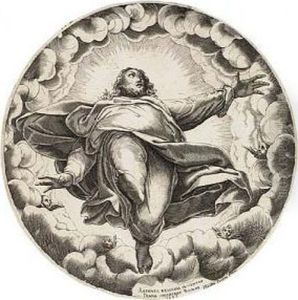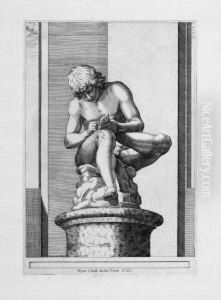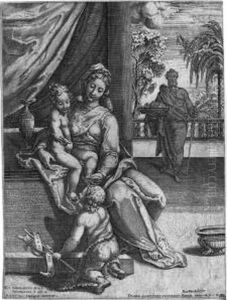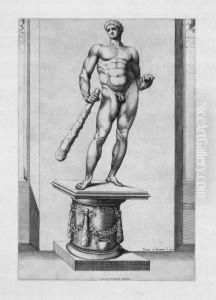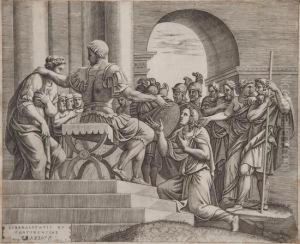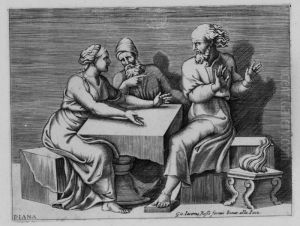Diana Scultori Paintings
Diana Scultori, born in Mantua, Italy, in 1547, was a distinguished Italian engraver of the Renaissance period, known for her exceptional skill in the art of printmaking. Diana was born into a family with a strong artistic background; her father, Giovanni Battista Ghisi, was also an engraver, from whom she learned the craft. Despite the societal constraints on women in the arts during the 16th century, Diana carved out a significant career for herself, becoming one of the few female artists of her time to achieve recognition for her work.
Diana's talent and determination led her to Rome, where she furthered her career and established her reputation. She was granted a unique privilege by Pope Gregory XIII, a rarity for women of her time, allowing her to sign her work with her name, a testament to her exceptional skills and the respect she garnered among her contemporaries. Diana Scultori is often celebrated for her ability to blend intricate detail with a delicate touch, characteristics that made her engravings highly sought after. Her works mainly consisted of religious and mythological scenes, as well as portraits, through which she demonstrated a masterful grasp of the engraver's burin.
Significantly, Diana Scultori Ghisi broke through the gender barriers of her era, becoming an inspiration for future generations of female artists. Her marriage to architect Francesco Capriani da Volterra further connected her to the artistic and architectural circles of Rome, yet she remained independent in her artistic endeavors. Diana's legacy is not just in the remarkable quality of her engravings but also in her pioneering role as a woman in the arts. She passed away in 1612, leaving behind a body of work that continues to be admired for its beauty and precision, securing her place in the annals of art history as one of the pioneering female engravers of the Renaissance.
